How to Grow Potatoes on Your Patio {Guide}
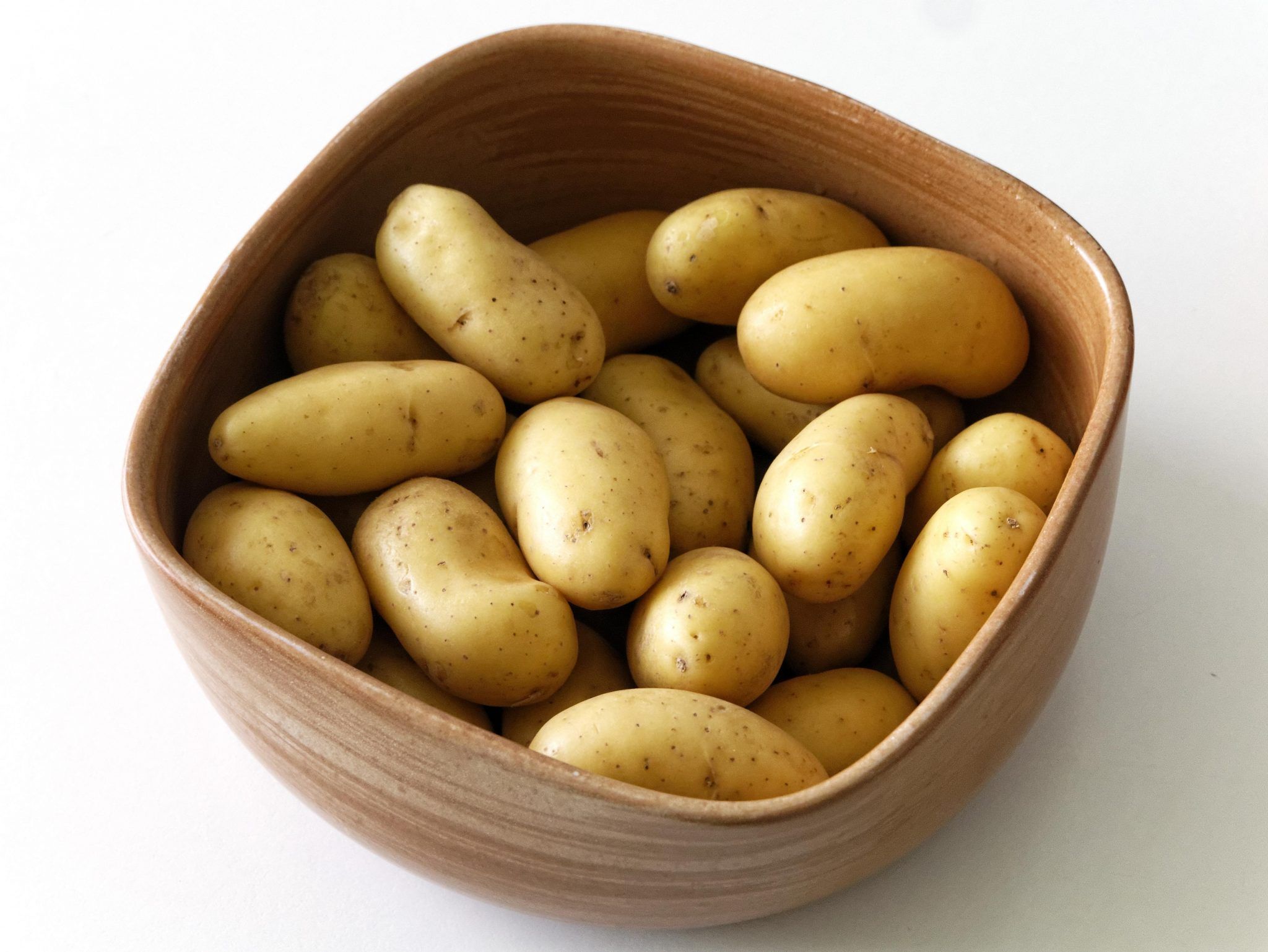
Southern California gardeners often seem perplexed about how to grow potatoes and often shy away from adding them to their backyard gardens. Some believe potatoes are difficult to grow, others think they will not grow well in our area, and some think it requires a lot of space to grow them. None of these things are true.
In fact, you can quite easily grow potatoes in containers right on your patio in your Southern California backyard. As with some other crops, SoCal is one of the few places in the country where you can even grow potatoes year round.
Potatoes can certainly be grown in the ground, but there are many reasons to choose container gardening instead. Container potatoes take up less space, are not invaded by gophers, are easy to harvest, and add color and texture to your patio. They are a great way to break up hardscapes and a great addition to your backyard garden.
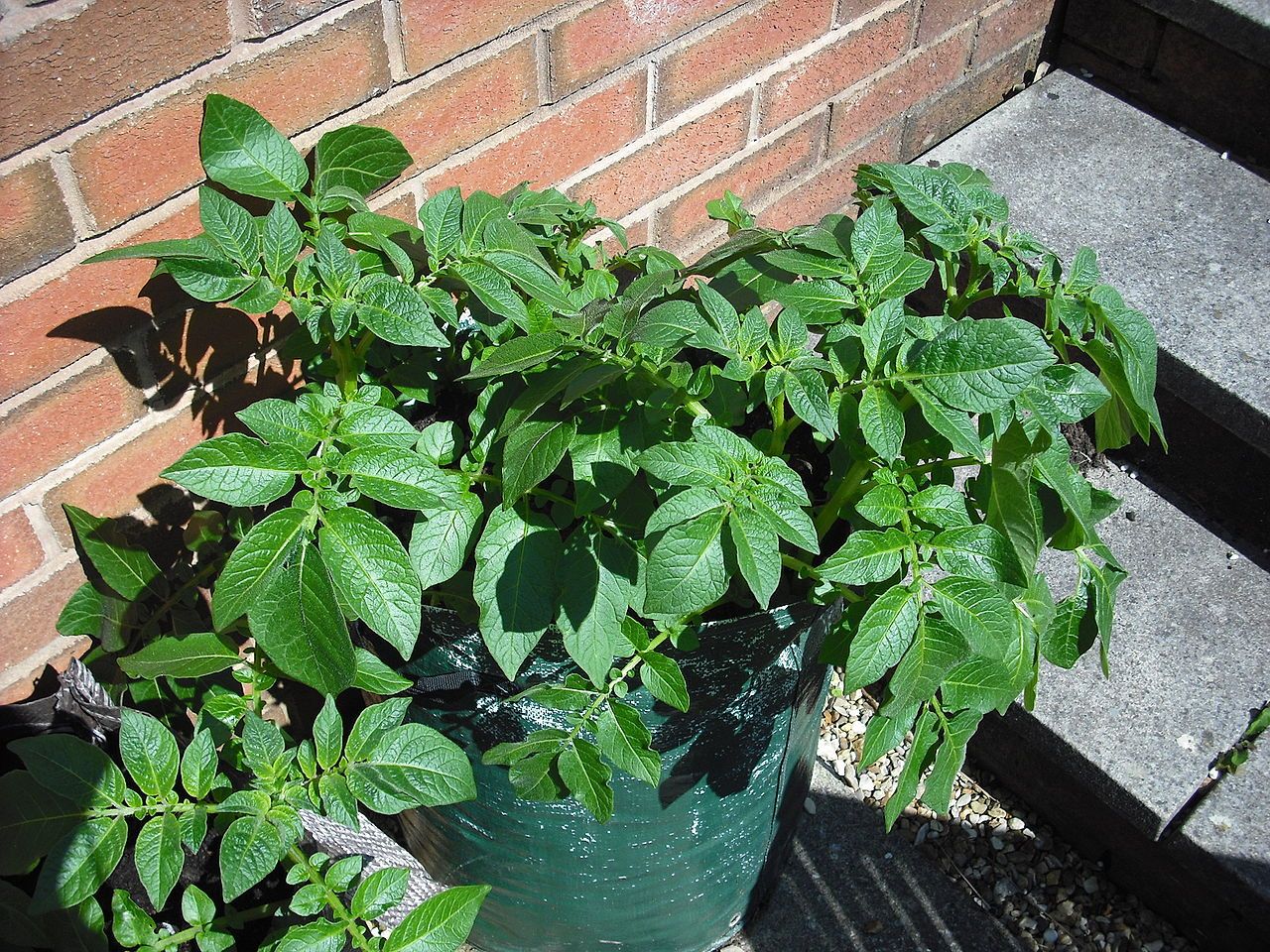
How to Grow Potatoes: Choosing a Container
Potatoes are pretty forgiving when it comes to the container in which you choose to grow them. While it should be noted that planting in the ground is an option, it is actually much easier and more convenient to grow potatoes above ground, particularly when it comes time to harvest your crop. And, of course, if you are planning to grow potatoes on your patio or balcony, you will certainly need containers to accomplish this.
Here are just a handful of container options you can use for growing potatoes:
1. Plastic trashcans
2. Plastic or rubber buckets
3. Reusable shopping bags
4. Fabric planting bags
5. Plastic planting bags
6. Old tires
7. Conventional pots
8. Plastic storage bins
9. Wood planters or boxes
10. Wood barrels cut in half
11. Old laundry baskets
12. Burlap sacks
13. Wire cages
It is best to plant one seed potato for each five gallons of container space, so choose the size of your containers based on how many plants you would like to grow in each one. If you might need to move the container when entertaining or for any other reason, you will also want to choose pots or bags that will be a manageable weight once they are filled with soil.
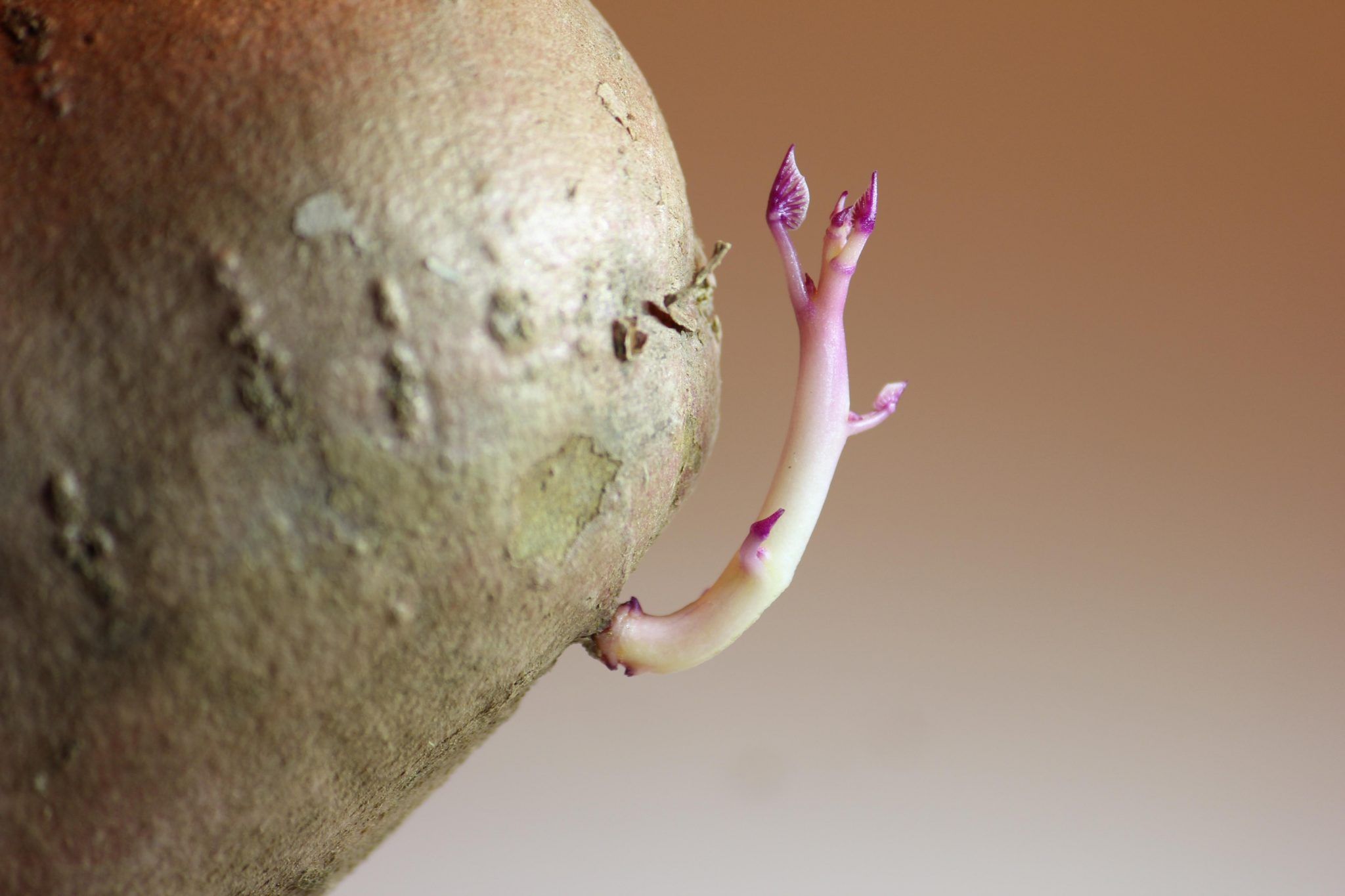
How to Grow Potatoes: Choosing Your Soil
Potatoes prefer well-drained, loose soil that is a bit on the acidic side. If you are planting in San Diego’s clay soil, you will likely want to amend it with peat moss, mix in compost and double dig it. If you are planting in containers to grow potatoes on your patio, you can purchase bags of soil at your local garden center. You may still need to add peat moss to get to an appropriate pH. Also, it is worth purchasing a pH test kit to test your soil before planting.
How to Grow Potatoes: Planting Guide
You have two options when it comes to acquiring potatoes to plant in your backyard garden. You can either use leftover potatoes from the grocery store or farmers market, or you can purchase seed potatoes. You can often purchase seed potatoes at garden centers, but you may need to purchase them online if they are not readily available in your area.
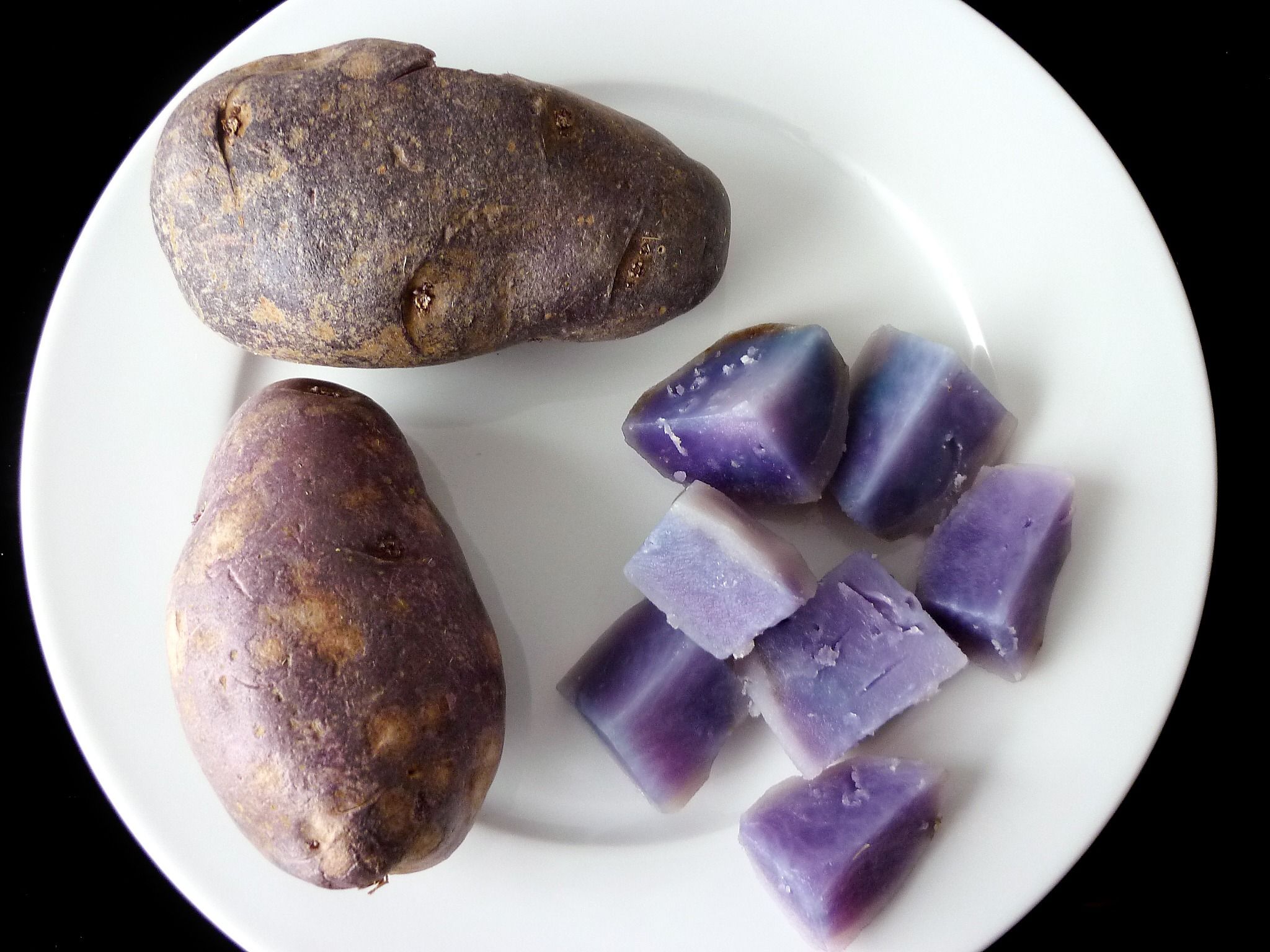
Most experienced gardeners agree that you are much more likely to have satisfying results if you opt for seed potatoes. Organic gardeners will also point out that the potatoes in your local grocery store have been sprayed with chemicals that make them a less appealing option. On the other hand, folks grow backyard potatoes from potatoes they bought in their local produce department all the time. So if you are just starting out or are planting potatoes on a whim, this may be the more convenient option to try. You can always order seed potatoes next year if you decide that potato growing is for you.
Once you have acquired your potatoes, it is time to get them in the dirt. Smaller seed potatoes can be planted whole. Store-bought potatoes and larger seed potatoes should be cut into small chunks with at least two eyes per piece. Allow the chunks to dry at least overnight before planting them.
Plant your chunks with the eyes pointing up about a five inches deep in your container. Make sure your chunks are at least six inches apart to give your plants enough space as they grow, and keep in mind that you should plant one chunk for every five gallons of container space.
You will want to start with a low soil level that will allow you to add more soil as your plants grow.
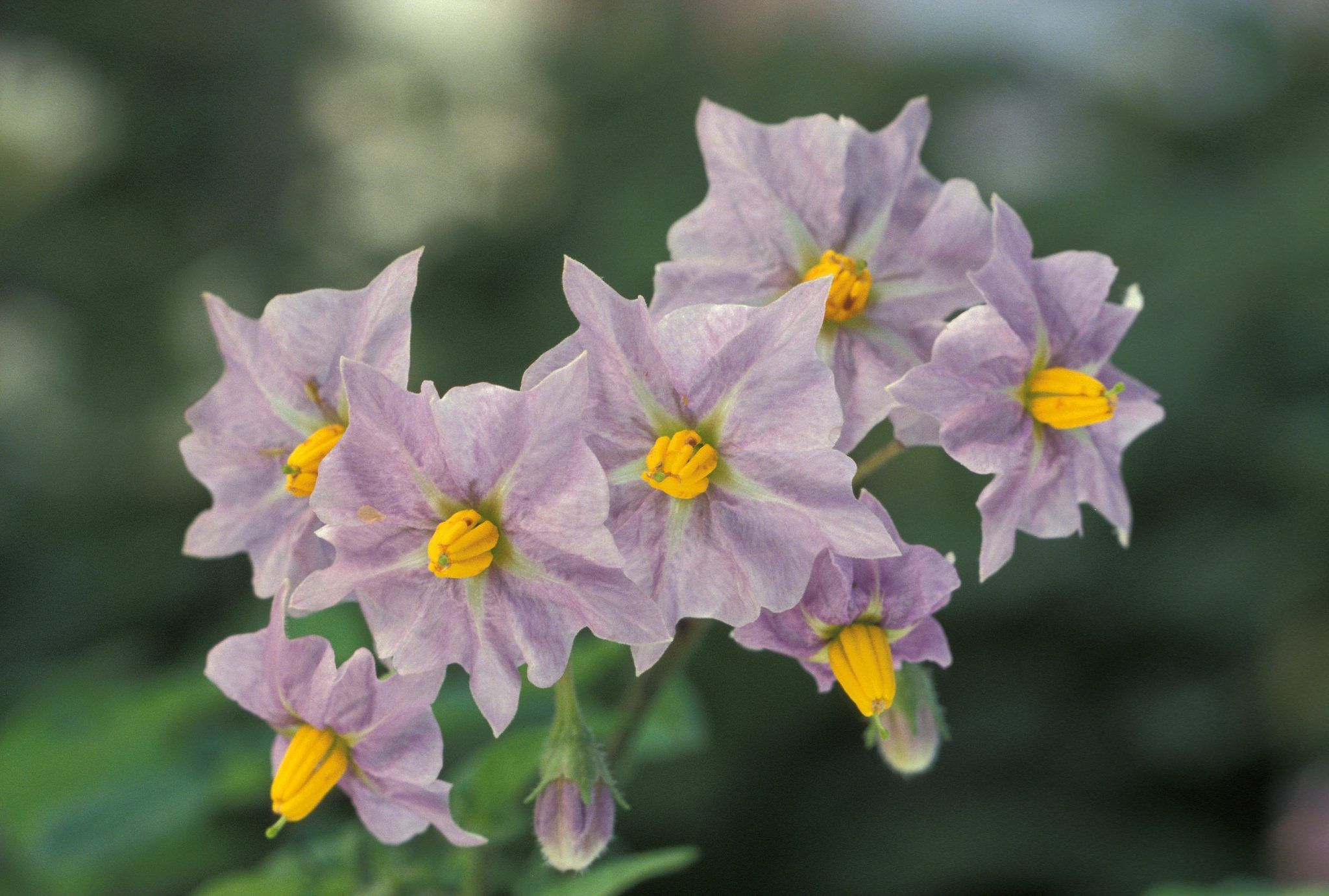
How to Grow Potatoes: Caring for Your Potatoes
Once your potato plants have grown about six to eight inches, you will want to add more soil to your container to cover most of the new plant. Do this again when it has grown another six inches. By this time, you should be pretty close to the top of your container.
You will need to water your potato plants regularly, particularly if you are growing them during the warmer months in Southern California. Once a week may suffice, but check soil moisture regularly to see if you need to up it to twice a week.
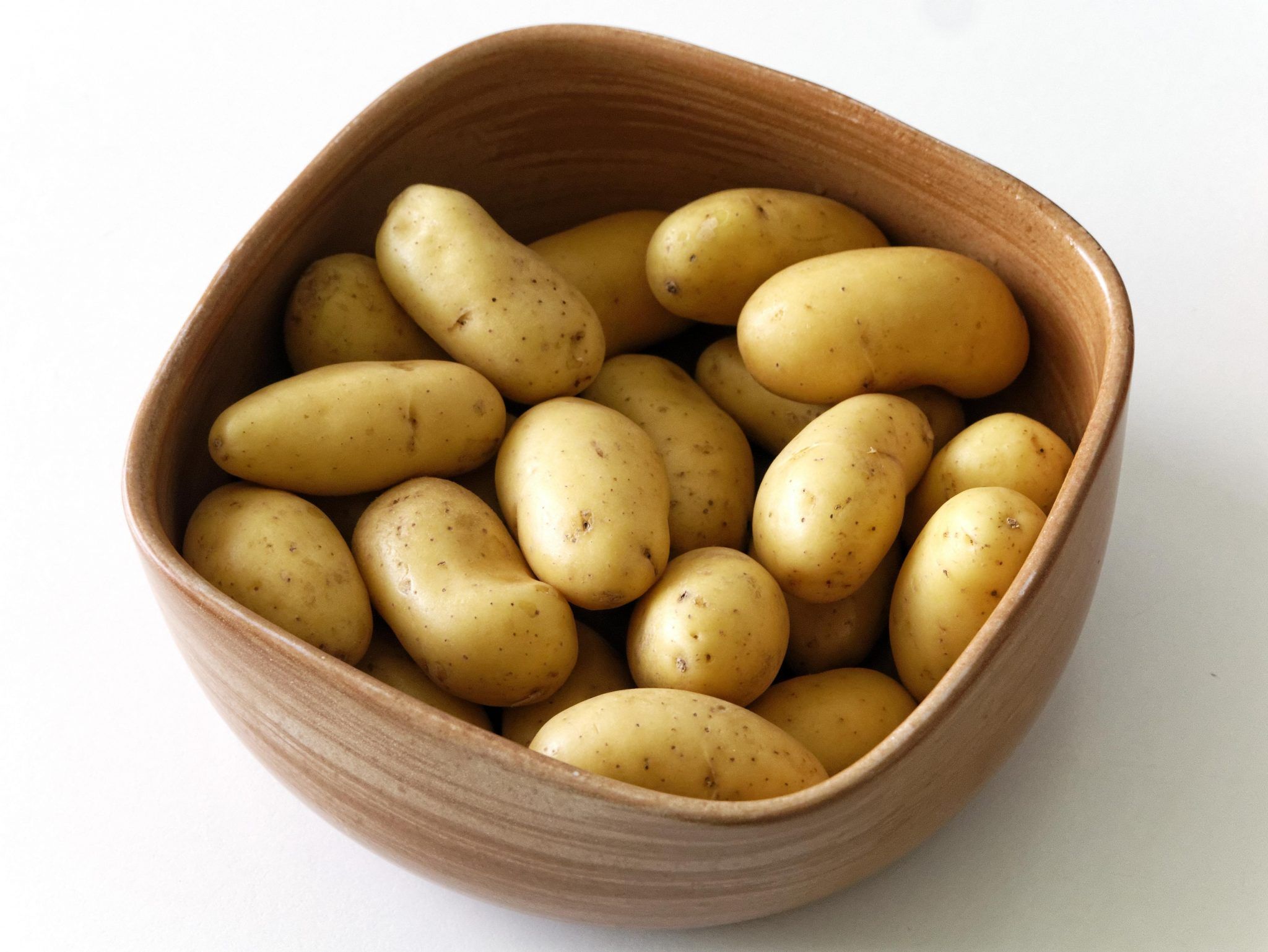
How to Grow Potatoes: Harvesting Your Patio Potatoes
When your potato plants begin to flower, you can begin gently digging around in the soil to find small potatoes (aka new potatoes) to harvest. This allows your plants to continue growing other potatoes and can extend your harvest a bit.
Once the foliage starts turning yellow and dying off, your potatoes are ready to harvest. Stop watering your plants when you notice this, and it is best to wait about a week or two to harvest after you have stopped watering.
This is when you really see the benefit of growing potatoes in containers, because it makes harvesting very easy. You can remove the foliage for easier harvesting, and then spread a tarp on the ground. Tilt your container and gently dump the contents on the tarp. Dig through the soil to find your potatoes, and you are done. It really is that simple to harvest container potatoes.
Do not clean all of the soil off of them and spread them out in a cool, dry place to dry out a bit before storing them.
Your Turn…
What are your favorite tips for growing patio potatoes?
Photo Credits (in order of appearance): morgueFile, MaxStraeten; Wikimedia Commons/Jolly Janner; morgueFile, gary3141; Wikimedia Commons/Paebi; Wikimedia Commons/Keith Weller; morgueFile, jeanneg